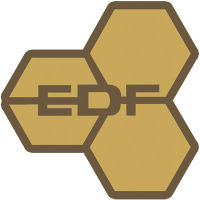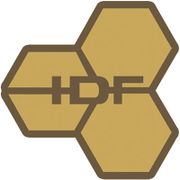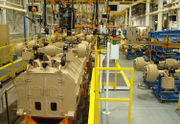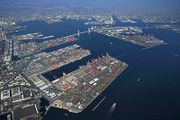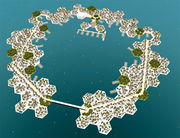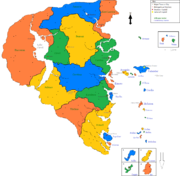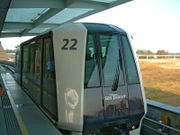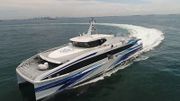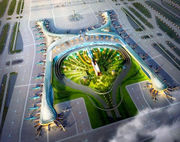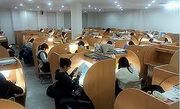Nation/Free Syllvin
| The Confederate Islands of Free Syllvin Adante Illa Farvin Sillwen
|
||||
|---|---|---|---|---|
|
||||
| Motto: "Best Way Forwards" | ||||
| Anthem: "Sail On Higher" | ||||
| Capital and largest city | Syllvan Center | |||
| Official languages | Avannian, Island Common | |||
| Demonym | Syllvan | |||
| Government | Tricameral Parliamentary Republic | |||
| - | Chairman of the Conclave | Constantine DeMarc | ||
| - | Speaker for the Assembly | Cyro Valle | ||
| - | Speaker for the Commons | Ellie Montus | ||
| Legislature | Syllvan High Senate | |||
| - | Upper house | The Conclave | ||
| - | Lower house | The Island Assembly & The Commons | ||
| Formation | ||||
| - | Establishment as a Kingdom | 4 January 1650 | ||
| - | Valandar Reformation | 7 April 1919 | ||
| - | Water (%) | 31% | ||
| Population | ||||
| - | 2016 estimate | 69,025,731 | ||
| - | 2016 census | 67,143,097 | ||
| GDP (PPP) | 2018 estimate | |||
| - | Total | Σ 3,131,780,000,000 | ||
| - | Per capita | Σ 45,371 | ||
| Gini | low |
|||
| HDI | very high |
|||
| Currency | Syllvanian E-dollar (Σ) (SED) |
|||
| Time zone | Syllvan Island Time (UTC -2) | |||
| Drives on the | right | |||
| Calling code | 407 | |||
| Internet TLD | .sv | |||
The Confederate Islands of Free Syllvin, known nativley as Adante Illa Farvin Sillwen ( lit. The Free Confederacy of Forested Isles), and most commonly referred to as Free Syllvin, is an equatorial nation that enjoys a high standard of living and a comfortable tropical climate. It is comprised of 29 territories spread across a volcanic-coral island chain in the South Concordian Ocean, as well as 11 territories in eastern Gondwana. The two areas are separated into Sectors known as "the Confederacy" and "Syllvania," respectively. While also laying claim to some 237 other small landmasses in the area, Free Syllvin only maintains a passing presence on them due to their usage as resource mines or military posts. The largest island, Valandar, has almost a third of its landmass covered by the capitol city of Syllvan Center, which is the largest city in the nation and an important cultural and commercial center. Free Syllvin shares borders with the Daccic Republic to the south and Izonno to the north.
The ecosystems of Free Syllvin are widely diverse, with the most-common being tropical rain-forest and the second most-common tropical savanna. Several inland territories have grasslands and tropical deserts covering their interiors behind mountains. Salt marshes make up much of the coast. The Confederacy archipelago hosts a wide assortment of coral reefs and cays as well. The highest point is Cormin Peak, 1712 meters above sea level, with an average height of 234 meters above sea level. Syllvanians are conscious of their environment, with 35 ecologically protected parks and preserves spread around the nation. Several species of animals, specifically fish, birds and deer, are exlusive to Free Syllvin.
First coming into its own as a proper nation state at around 1650 CE, with the formation of the Kingdom of the Islands and the Coast, the modern Free Syllvin is a leader in law enforcement, public transport, and defense. Its income per-capita is consistent within 35,000 E-dollars of the highest and lowest levels of society thanks to extremely tight income tax on the top 10%. Private corporations are heavily regulated and many company boards are populated by government officials. Free Syllvin is considered a post-information state, with heavily networked infrastructure and technological prevalence. The nation's primary exports are military equipment, technology, and sea-craft.
Contents
History
Free Syllvin has been constantly expanding ever since the Confederacy was settled by humans. The first settlers arrived relatively late in the era of human expansion. Archaeological evidence puts the time of arrival somewhere around 300-500 CE, on the island of Tonk. These sailors are thought to have come from the east, either from the Leganese isles, Concord, or Arcturia itself, the origin point for humanity. To date, none of the nations in these possible starting points have put forward any evidence to confirm these theories. The artifacts found on Tonk are uniform in design and supposed culture, while the next-latest findings on Kwunar and the coasts of Carrius reveal that the people who arrived at Tonk likely split into two groups and settled different areas as they traveled west. Those that made their lives on Kwunar developed into the Kwun people, and over the next thousand years spread throughout the Syllvan archipelago, making Valandar the capitol and cultural center of their fishing-centered kingdom.
Free Syllvin currently operates a social-consciousness government, which states that it's goal is to view issues from the perspectives of the people. While, phasing out of a massive military-industrial complex is difficult, the High Senate is taking steps to once again diversify the Syllvan economy. With much of the Confederacy urbanized or otherwise heavily developed, there is a strict and ever increasing set of environmental regulations to preserve the habitats and ecosystems that are spread around the nation.
Geography
The Syllvan islands developed as the tectonic plates shifted, exposing a volcanic hotspot. This hotspots is still active to the north of the nation, though it currently does not fall under Syllvan influence. The oldest island in the chain is estimated to be 17 million years old, and the largest, Valandar, is just under 500,000 years old. There are several dormant volcanic peaks throughout the chain, but each has been inactive for at least 3 million years. The rock content is mostly silica, with large deposits of basalt throughout the area. The volcanic islands of Free Syllvin are each their own separately-administered territory, which is why they are known as the Confederacy.
Along the eastern side of the island chain, there is a long series of barrier islands, atolls, and coral cays that are known as the StepSisters. This archipelago is built upon the Greater Allas Boundary, an extensive reef ecosystem that extends 1,800 miles north-south and 200 miles east-west. Because of this natural barrier between the island chain and the ocean proper, the only ways to access the Confederacy and most of Syllvania from the sea with large ships is to travel between either the northern or southern gap between the islands and the mainland. All other attempts will result in becoming beached on the reefs, which will not only scuttle a ship, but incur severe fines from the Syllvan government. All of the islands of the Confederacy and the Stepsisters enjoy a warm, tropical climate year round. During the periods of storms, however, the smaller landmasses have a high risk of flooding.
In Syllvania, the climate is separated into three distinct sections. The many bays and inlets of the coast host salt marshes and thick forests, with deciduous groves in the extreme south and the rest broadleaf evergreens typical of the tropical rainforest biome. Following the expansive rivers inland, the dense Gedian mountain range leaves a colder climate in the midlands of Syllvania. Seaward, the mountain valleys are perpetually alpine, with little snow but low temperatures and full of needle-leaved evergreens and oaks. On the other side of the mountains, rain-shadowing leaves the land sparse, the only areas being able to grow more than shrubs located immediately next to the rivers and the rivers that feed the freshwater sea of Lake Cirrel. This arid land gives way to hot deserts at the south-eastern edge of the nation.
Metropolitan Territories
Due to the Confederacy being the historical and cultural home of the Farwe ethnic group, it is home to the majority of their population, and as a result, the largest number of individual urban conglomerations in the nation. 14 of the islands are completely covered with city-sprawls and land reclamation projects in order to provide living space for the large populations. A large portion of the population lives in and on the Greater Metropolitan Territory of Valandar, and there remains a premium on living space throughout the archipelago. One of the core cultural beliefs of the Farwe is that they are a people of the sea, born to rule the mainland from the islands. This clashes harshly with the idea of moving to Gondwana for more living space, and so the Syllvan government has pursued alternative means of solving this population problem.
Climate
The climate of Free Syllvin varies by region, due to differences in altitude and, with some extent, proximity to the ocean. It is generally mild year round in the central highlands, with a humid subtropical climate in the lowlands. The islands and coast are generally tropical rainforest. In the western lowlands, subtropical desert expands out past Lake Cirrel due to rainshadowing.The coastal lowlands in the eastern part of Free Syllvin are typically warm with temperatures in the region of 25 °C (77 °F). Coastal areas are affected by ocean currents and between January and April are hot and rainy.
The weather in the regions further inland is consistent with that of a subtropical highland climate. The areas east of the Gedian Mountains is subject to some ocean breezes that cool the area, but west of the mountain range has no such wind patterns. In the tropical territories, the average temperature during the day is 78 °F (26 °C), which generally falls to an average of 50 °F (10 °C) at night. The average temperature annually is 64 °F (17.8 °C). In the highlands areas, the average temperature is 61 °F (16 °C) during the day and drops to an average of 47 °F (8 °C) at night. The average annual temperature is 55 °F (13 °C). In the subtropical desert regions, the average temperature can climb up to 89 °F (31 °C). At night, it can drop to an average of 43 °F (6 °C). The dry season (summer) runs from June to September and the wet season (winter) is from October to May. As Free Syllvin is below the equatorial line, June to September is considered to be winter, and winter is generally the dry season in warm climates.
Government
Administration
Free Syllvin is currently led by a three-house parliament. The upper house, known as the Conclave, consists of 41 Councilors elected from each of the major territories. The role of Chairman, essentially the head of state, rotates positions every 2 years based upon an interior vote, and the Councilors are re-elected by their constituents every 5 years. Each is the head of a certain department within the government, such as Commerce or Agriculture. They serve as a quasi-executive branch, voting upon resolutions approved by the Island Assembly, and enacting edicts themselves.
The "lower houses" are the Commons and Island Assembly, though they each have separate functions that make them equal. The Island Assembly is the de-facto legislative branch, and deals with passing, altering, and repealing law. They are composed of 123 delegates, 3 from each territory. The delegates are appointed by the preceding delegate, selected from a list of candidates elected by the people of the territory. The Commons is made up of 246 officials from around the nation; each territory is allotted 6 elected representatives. They represent a check on the powers of the other two, debating laws and regulations and posessing the power to alter or remove them if they see fit. Alterations to such documents cannot be overturned by either the Conclave or the Assembly without a court case.They also can vote with three- fourths majority to remove a Councilor for their position if they feel that the powers of the Conclave have been misused. Their name, "The Commons," comes from their ability to act as a counterbalance to the Assembly and Conclave and act in the interests of the people rather than the government.
Chairman of the Conclave
The Chairman is the de-facto head of state, posessing moderator powers in Conclave discussions and representing the group as a whole. The Chairman is elected from among the Conclave every two years. The Councilors may put any member of their number forwards as a potential candidate except for themselves. Candidates have two months to prepare to take on the responsibilities, and to create a platform to present to the other Councilors on the merits of electing them Chairman. The Conclave then votes anonymously to determine which candidate will become the Chairman. When the Chairman is chosen, they are obligated to take the role, and assume the duties and the Head Seat at the Table over the course of three weeks. The Chairman can guide discussion during official Conclave meetings and can veto proposals that are brought to the floor, but otherwise maintains the same voting power and administrative control over their assigned constituency and government department, same as the other Councilors. The current Chairman, Constantine Demarc, hails from the territory of Emoro. He has headed the Department of Energy Management for twelve years, and has also been Chairman for three consecutive terms.
Speaker for the Assembly
The presiding official for the Island Assembly, the Assembly Speaker is the administrative and political head of Free Syllvin's Parliament. They are charged with maintaining civil discussion during debate, breaking vote ties, communicating Assembly decisions to the Conclave, and ensuring partisan discussion and decisions be suppressed within the Assembly membership. The Speaker does not represent a territorial constituency, and when one is appointed, a new Assembly member must be elected from their constituency. The Speaker also does not participate in regular votes or debates besides ensuring that order is maintained. The Speaker is issued the Emerald Chair at the center of the Assembly Hall and has all privileges and clearances that a member of the Conclave would. The sitting Speaker is Cyro Valle, a native of the territory of Carrius.
Speaker for the Commons
The Commons Speaker is the presiding official for The Commons, and is the administrative head of the political review council for Free Syllvin. The Commons puts each law, edict, doctrine, and decision made by both the Assembly and the Conclave to a review and votes on whether it is fair, non-partisan, and represents the best possible course of action on the issue for the Syllvan people. Because of the large number of such votes that must be held per-day, the Speaker moderates the discussion and ensures that The Commons remains within focus on the issue. The Speaker announces the issue for discussion, gives a summary of the decision and the projected effects, accepts any requests to make a statement, oversees and moderates debate, puts the issue to vote, and records the outcome. They then log the result, send it to the Assembly and Conclave, and proceed to the next issue. If a decision is found to be against the interests of Syllvan citizens, the Speaker is responsible for gathering statements from The Commons on why they voted to repeal it, and then issue this information to the Conclave and Assembly, as well as the PR division of The Commons to issue a news piece about the vote. The current Commons Speaker is Ellie Montus, a practitioner-of-law from the territory of Aquitar.
Foreign Relations
Free Syllvin maintains a low number of diplomatic and commercial ties with other nations, preferring to only associate with countries that are either interested in a mutually beneficial arrangement or are in its immediate local area. Its status as one of the largest exporters on the eastern Gondwanan coast has necessitated ties with several close nations.
A former member of the SEPC, Free Syllvin left the Coalition on vote of both the upper and lower parliamentary houses. After a costly and protracted war with its western neighbor, the Daccic Republic, the general populous of Free Syllvin voiced their grievances that the SEPC, which is largely based upon military cooperation and mutual protection, did not offer any aid nor issued any statement about the conflict. After their notice to the SEPC Security Council received no response, the Conclave and Island Assembly voted overwhelmingly to dissolve their allegiances and obligations to the SEPC.
Free Syllvin requires nations to have a Tourism Permit Authorization in order for their citizens to visit the country. Citizens from a country with a class -3 authorization can only visit the southern islands of Goppis, Bill, Fentrar, and Kellic, which are developed with tourism in mind. Citizens with a class-2 authorization can visit the upper and lower islands of the Confederacy as well as Aquitar, Karaktan, Baelis, Emoro, Carrius, and East Larrica. A class-1 authorization permits citizens to travel anywhere in Free Syllvin save the Hall of Sorrows in the capital, industrial areas, and military installations.
Free Syllvin is currently the largest financial contributor to the Peacekeeping Forces of Urth, awarding the group 2 billion kiribs annually. Nations with deep diplomatic ties include New Leganes and Furnifold. Others that maintain embassies with Free Syllvin include Asendavia, Celannica, Adumara, Mexregiona, The Oan Isles, Laitainburg and Kuthernburg, Tivot, Xagrurg, Mvulaland, and the Yor Isles. Embassies are located within the Sorrows District in Syllvan Center. Embassies are not permitted to be located outside of this area.
Military
Main Article: Military of Free Syllvin
There is no single department that handles military matters in Free Syllvin. The four that are involved with national security are grouped into a quartet officially known as "The Department of Four Stars." These departments are largely individual entities, but must cooperate to operate effectively. There is a large portion of the political and social culture in Free Syllvin that has been influenced by their military history, most prominently shown in their lack of a decentralized law enforcement apparatus and the mandatory four-year conscription all Syllvans must participate in at some point in their lives. The standing military forces of Free Syllvin are split into two groups. The External Defense Forces handle the protection and security of the nation's borders as well as taking part in any offensive operations. The Internal Defense Forces are tasked with law enforcement and security within the borders. The defense forces enjoy exclusive contracts with Syllvan State Arms and Syllvan Fleet Systems. These companies produce high-quality weapons and equipment that is only available to the IDF and EDF.
External Defense Forces
The External Defense Forces, or EDF, are the 'traditional' armed forces of Free Syllvin. They operate as the largest portion of the Department on National Defense. Their equipment and training is all state-of-the-art, either developed domestically or reverse-engineered from foreign sources. This ensures that though the EDF is a smaller than average organization, it remains on-par with other armed forces across Urth. The EDF is nominally led by Adria Kalan, Councilor of National Defense, but in her capacity as a lawmaker she leaves the day-to-day administration to the Overcommittee on National Defense, otherwise known as the Corps Board of Directors. The CBD is made up of the highest ranking officers of the Ground Assault Corps, Combat Aviation Corps, Nautical Defense Corps, and the chairmen of the EDF Public Relations Committee and InterForce Cooperation Committee. These men and women determine the focus and deployment of troops, training standards, annual budget, and the message the EDF wants to give the rest of the world.
There are three combat divisions of the EDF. The Ground Assault Corps is composed of infantry, armor, and artillery elements that are the core of the EDF manpower base. Operating in small brigades, the Corps was designed from its inception to work hand-in-hand with the Nautical defense corps to maneuver assets into battle via shipborne transport and amphibious assault. The Nautical Defense Corps itself is the second-largest of the EDF branches, both because of the large amount of soldiers it takes to crew warships and because of the expansive naval docks and defense posts that Free Syllvin has set up in its borders and its EEZ. It is focused on three primary directives: provide safe and effective transport for GAC forces to and from areas of operations, denying enemy combatants the military and economic advantage by disabling their maritime capabilites, both commercial and military, and act as logistic and fire support for troops deployed into combat. Finally, the Combat Aviation Corps is the smallest of the three. Their branch name aside, CAC pilots can be tasked with anything from transport, reconnaissance, search-and-rescue, to close-air support and interdiction. CAC units are often embedded with GAC units, or individual pilots and their craft assigned to Syllvan warships. However, since the NDC does not possess any fighter carrier craft, such instances are limited to helicopters.
Internal Defense Forces
The Internal Defense Forces, or IDF, take the place of police in Free Syllvin. Their official oversight comes from the Department on Interior Security. A centralized command structure and a wide array of military issue equipment ensures a safe and crime-free nation. Each Sector is under the leadership of a Sector Commander, which in the case of Syllvania is Gentus Dore of Interior Security Command and Control, Derrip Morlan Nautical Base. The Confederacy is overseen by Calgar Rist, of Interior Security Federal Offices, Hall of Sorrows. These Commanders report directly to Councilor Jenae Benia, and have under their purview the Territorial Commissioner for each territory in their Sector. These Commissioners usually operate out of the largest Central Security Office in the territory, and have administrative oversight on each of the smaller Offices.
The three divisions of the IDF cover a specialized area of operations to allow trained professionals to operate more efficiently. The Sentry Corps is responsible for on-the-street policing of the nation, investigating most crimes, performing counter-terrorism operations, and acting as a reserve infantry force in case of invasion. They also possess cybercrime departments that investigating cybercriminals, and ensure IDF electronics are free from malware and intrusion. The Sailing Corps handles the duties one would associate with a Coast Guard: patrolling the EEZ for poachers, smugglers, and foreign espionage, rescuing stricken vessels, enforcing harbor law, and interdicting hostile ships. The Air Corps is a combination of many different duties. They supply the helicopter components of both the Sentry and Sailing Corps, but also perform terrestrial search-and-rescue, firefighting, transport of materiel, and testing new military aircraft. They maintain a division of fighter and attack helicopter pilots for defense against foreign aggression. Each Security Office, whether for a large city or a rural town, will have a combination of officers from different divisions to ensure that the needs of the area are met.
Economy
The Syllvan economy can be defined by the social corporatism model; that is, the direct and encouraged dialog between labor and employer with the government as a mediator. It is a manufacturing-driven economy; the local service market is well developed but rarely sees foreign customers, while Syllvan-made goods are used throughout the world. The economy has traditionally been characterized by fluctuating growth, high levels of innovation, and low inflation. Unemployment averages between 2 and 4 percent annually, with the largest contributing factor being medical disabilities. As a consequence, economic growth has slowed over the past decade and given way to an increasingly prevalent socialist welfare system. Per-capita PPP stands at Σ 45,371, or $39,926, making Free Syllvin one of the wealthiest nations in Gondwana.
Manufacturing
Free Syllvin has an enormously diverse manufacturing sector, which started in the 1920's with coal, steel, lumber, and woodwork. It has since diversified into several dozen categories, the most prominent among them being sea and aircraft, photovoltaics, electrical systems, industrial machinery, nuclear power, plastics, mining, and public transportation. Many assembly lines and refining plants are automated, allowing precision and efficiency while simultaneously stimulating the mechatronics and engineering fields of employment. Large deposits of chemicals, natural gas, and precious metals can be found throughout the nation, and these wellsprings of resources are exploited to be refined, processed, or simply sold wholesale. The largest area of Syllvan manufacturing is military equipment. Due to the historic nature of warfare and a slew of lax legal standards about taxing, purchasing, and owning weapons, Free Syllvin is both the birthplace and adopted home of many arms manufacturers. There are seven state-owned corporations that deal in weaponry, though only Syllvan State Arms and Syllvan Fleet Systems are publicly traded companies. Many of them sell their merchandise through the shell company Dirt Cheap, LCC. It runs an online catalog with inventories of camping gear, survival equipment, and hunting firearms, while also stocking ballistic missiles, tanks, and plastic explosives. The importance of the ocean in the development and social structure of the nation has also lent Free Syllvin numerous shipwrights. Most build pleasure craft or commercial ships out of drydock or workshops in eastern Syllvania. Characteristics of Syllvan watercraft include low drafts to navigate the shallow Gulf waters and Allas Straits, and a hook-beak prow.
Finance
Banking and investment also plays a large role in the Syllvan economy. Banks are heavily regulated by the state, and as a result there are a large amount of privacy regulations that make Free Syllvin an attractive tax haven. Substantial amounts of revenues of local and international corporations are channeled through the Syllvan financial system every year, so much that up to 7% of the Syllvan economy is bolstered by the operating fees that banks charge for handling this money. The investment climate in Free Syllvin has experienced a 8% growth over the past two fiscal years, as laws concerning international corporations are relaxed. The city of Kendring, being the largest port in Eastern Gondwana, has seen the largest influx of foreign companies; two insurance firms, a bank, five shipping companies, and three cruise tours have opened regional offices in 2018.
Agriculture
Free Syllvin has a small agricultural sector, mostly dedicated to supplying food for the local population. Focused around the eastern area of Syllvania, farms never reach more than 50 acres. The staple crops grown are the Sore apple cultivar, Noreno oranges, Oroje pears, beets, corn, ginger, and oat. Other crops include millet, sugarcane, tea, coffee, flax, and hemp.
Fishing
Fishing is an important supplement market for Free Syllvin. Possessing a unique exclusive economic zone that is shaped by the Greater Allas Boundary, the nation has approximately 1.4 square million kilometers of ocean to fish in when factoring in the inland sea of Lake Cirrel. Small communities in Syllvania commonly depend entirely on fishing, and large ports in the Confederacy host significant fleets of trawlers and trappers. In the largest cities, aquaculture has become a common way to produce food for citizens locally. The most prevalent fishieries are in the Central Concordian Ocean, south of Tonk, and in the Aravnian Sea between the Confederacy and the mainland. In total, over 70 million tonnes of sealife was caught in 2017 with another 20 million produced from aquaculture facilities, generating $167 billion in exports.
Global Presence
Free Syllvin is a regional powerhouse in the fields of mining, arms manufacturing, and information technology. Not only does the nation serve as a regional anchor in terms of financial and manufacturing economics, it plays host to a significant center of exchange for the eastern Gondwanan seaboard. Goods from across the continent are gathered here and then sent on their way to other locations abroad, whether from across the Concordian Ocean and across the Syllvan Gulf into central Gondwana, or vice versa. Syllvan banks also have custodianship of large amounts of foreign capital, from private individuals and federal entities alike. The factories of Syllvania supply a majority of military equipment to the nations of eastern and central Gondwana, and they have significant stakes in the developing militaries of Arcturia. Many Syllvan export weapons are of cheap and simple construction, giving them the ability to churn out massive amounts of rifles and ammunition for tinpot dictatorships and beleaguered rebellions. The government maintains a distance from the larger arms manufacturers save Syllvan Fleet Systems and Syllvan State Arms, allowing them to retain political neutrality while simultaneously profiting from arms sales to all comers. Free Syllvin also supplies contractors overseas in a number of roles. Some of the more prominent are railway engineers, nuclear power technicians, solar energy specialists, defensive fortification architects, and private military forces. Government-backed suppliers and private businesses both have contracts with a number of foreign buyers, such as Stratarin, Xagrurg, Adumara, Kutherburg, Celannica, Asendavia, New Leganes, and more.
Modular Aquatic Population Limit Extenders
A project that Free Syllvin researched and engineered with assistance from the Oan Isles, the M.A.P.L.E. project is intended to be a semi-permanent or permanent residence for communities that have been destroyed by coastal flooding. A complex is made up of a number of M.A.P.L.E. platforms that have interlocked at the corners, which can number anywhere from two to several dozen. Each platform is based upon the semi-submersible hull construction used in oil platforms, and has its own power generation and propulsion systems used to transport the platform and design different complex configurations. The project was completed in early 2018, with three massive construction yards in Tonk, East Larrica, and Aquitar set aside for the exclusive production of M.A.P.L.E. platforms.
In contrast to the original project, M.A.P.L.E.s are singular units that can be configured into a number of different roles, as opposed to a single larger platform that would have to be designed and built all at once. There are currently 17 different configurations for a platform, with the primary 3 being power generation, residency, and hydroponics. A typical residence platform can house upwards of 1,600 people in high-density condominium structures. Most accommodations are not much different than a small hotel room or apartment flat. Occupants of living space are required to either pay a monthly rent or work in the complex in a role that keeps the platforms or facilities functioning. The power platforms are divided into solar, hydro, and wind power. Each turbine on the wind platform can generate up to 500,000 kilowatts a year, totaling 50 gigawatts, while the solar platforms can generate more that 20 gigawatts a year. Hydro platforms are able to have structures built on their upper surface thanks to the power generation equipment being located within and underneath the platform, but have a drastically reduced capacity, only generating 420,000 kilowatts a year. The platforms are equipped in such a way that excess energy is stored in capacitors across each unit, and can be dispensed to power the integrated boats and helicopters that are built into certain models. The hydroponics platforms can each individually provide food for approximately 2,000 people, depending on the crops grown. They are primarily used as a stopgap measure to supplement food supplies, which are imported from other locations or are harvested by the complex's occupants.
A complete list of the types of platform configurations is as follows:
- Complex Command/Control
- High density residence
- Commercial/Shopping
- Security
- Helicopter hanger
- Recreational facility
- Hydroponics facility
- Medical facility
- Low density residence
- Solar power
- Wind power
- Hydro power
- Food processing facility
- Air defense facility
- Bridge anchor
- Parkland
- Ferry dock
Each platform requires a crew of between 35 to 120 to operate. Certain platforms need to be crewed by specialty personnel such as doctors or military operatives.
Free Syllvin maintains the option of any entity purchasing however many platforms they like, so long as they have the funds to buy it and the personnel to crew it. If an interested party wants to commission a custom-built platform, they can submit a detailed plan for the construction and will be billed the cost of construction as well as assembly. The primary target for the sale of the M.A.P.L.E.S is the type of small coastal or island nation that is running out of room for living space or infrastructure. The cost for a single platform is 80 million Kiribs, while a full complex can cost upwards of 25 billion.
There are currently four M.A.P.L.E. complexes: the prototype, consisting of smaller pentagonal platforms, is located in the southern Confederacy between Meluton and Sudeton, a complex of thirty-five platforms given to the Oan Isles as thanks for their assistance in completing the project, a complex of seventy-five platforms donated to the PKFU under Syllvan supervision, and a complex of ten currently in construction.
Demographics
Regions
Free Syllvin is divided into two Sectors, regions that are geographically and administratively distinct. The islands that make up the majority of territories are grouped into the Confederacy, named after the historical Avannian Confederacy of Islands. There are several sections of coastal land that is part of the Confederacy, however. Most larger islands are heavily urbanized, and those nearest to each other have extensive transport infrastructure that links them together. The quality of life in the Confederacy is significantly high, with access to most modern amenities and services in a developed nation. The four largest islands - Avannia, Aquitar, Baelis, and the capitol, Valandar, are known as the Four Jewels, and this symbolic quartet is mirrored in a great deal of Syllvan culture, from the organization of the military to jewelry. The blue-white architecture of Valandar and Aquitar are present in almost every tourism advert for the nation, and the four southernmost islands in the Confederacy are specifically engineered to cater to wealthy tourists and curious weekend travelers.
The Islands of the Confederacy are as follows:
- Valandar
- Avannia
- Astoren
- Dullus
- Kwunar
- Tonk
- Peloric
- Weles
- Fillien
- Cordis
- Emoro
- Illic
- Baelis
- Meluton
- Sudeton
- Firkon
- Aquitar
- Torlan
- Borlan
- Forlan
- Qorlan
- Bedorlan
- Folovus
- Kellic
- Fentrar
- Goppis
- Bill
- Fyemel
- Legons
- Sykels
- Volunis
- Laugre
The Syllvania Sector is much more industrialized and at the same time more sparesly inhabited, with huge factory and mining complexes broken by vast expanses of desert, mountain, and jungle. Civilization in this area is almost wholey dedicated to supporting and catering to the economic needs of the Confederacy. While the eastern territories along the coast are more metropolitan and developed, the western parts of Syllvania display a more rugged, downtrodden character. The bastions of culture and science here are strung along the shores of the inland sea known as Lake Cirrel. The farther one travels from this body of water, the less affluent the people, the less clean the air, and the less kind the working conditions. Ruyfeld Prime, straddling the Gedian Mountains on one side and the Polmor Basin on the other, is simultaneously considered the nation's industrial capitol and the most criminally-plagued area in the Sector.
The territories of Syllvania are as follows:
- Karaktan
- Carrius
- Dacceron
- Polmor
- Cirrel
- Annuen
- Sencan
- Visthus
- Gerrima
- Penael
- East Larrica
Religion
Free Syllvin is largely a non-religious state, with the census data showing that 28 % of the native population practices an internationally-established religion, 5 % consider themselves spiritual in some form, and 67% are either agnostic or atheistic. Those who reside in the nation on a visa program are more spiritual, with approximately 12 % saying they are spiritual, 40 % practicing a major religion, and 38 % atheist or agnostic. The largest religions in practice are Islam, Seventh Adventism, Deism, and Wicca.
While religion is not strictly banned in Free Syllvin, the government is strictly secular and takes great measures to ensure that spiritual beliefs do not interfere with political policy. Running for office on a campaign platform that includes policies either based on religion or aiming to cater to a specific religious demographic is forbidden. Any public official who uses a religious belief as their explanation for a proposed policy is disciplined the first time and dismissed the second. The legal precedent for this was established in the 1993 case Bregas vs. Handar, where the courts ruled in favor of an Internal Review official who had the mayor of a township dismissed due to his widely-publicized efforts to have his local district close businesses and government services on the worship day for the religion the majority of the citizens in the area practiced. The lawyers argued that by doing so, this would inconvenience those who did not practice this religion or were non-religious. It is now the policy of the High Senate to not give any religion any federal support over another, no matter how small of the attention or favor is.
Languages
Free Syllvin is a multilingual state, with two official and nationally-spoken languages and at least 42% of the population reports that they are fluent in at least those two, with 60% reporting they are fluent in at least 3.
Island Common (Isla Común) is the hereditary language of the Farwe people and the historical Kingdom of the Forested Isles. It is estimated that there are over 45 million speakers in Free Syllvin, including a large percentage of Daccic people. While it is a cultural taboo for someone not of Farwe ancestry to speak Island Common, it is a necessity due to the political and social world revolving around the Confederacy.
Island Common is a fusional language. The noun and adjective systems exhibit two genders and two numbers, in addition articles and some pronouns and determiners have a neuter gender in singular. There are about fifty conjugated forms per verb, with 3 tenses: past, present, future; 2 aspects for past: perfective, imperfective; 4 moods: indicative, subjunctive, conditional, imperative; 3 persons: first, second, third; 2 numbers: singular, plural; 3 verboid forms: infinitive, gerund, and past participle. Verbs express T-V distinction by using different persons for formal and informal addresses. Subject/verb inversion is not required in questions, and thus the recognition of declarative or interrogative may depend entirely on intonation.
The other official language is Avannian, developed by the Maddisek tribe that lived on the Syllvania coasts in antiquity. It is one of the root languages of Island Common, the other being the now-lost Kwun dialect of Kwenth. Spoken by approximately 21 million people, mostly on Valandar, it is the government-standard for official addresses and written documents. It is this reason why almost every newspaper, mail parcel, street sign, and all other forms of written media in the capitol is in Avannian.
Avannian is a synthetic, fusional language in the terminology of linguistic typology. In more traditional terminology, it is an inflected language, but typologists are apt to say "inflecting". Words include an objective semantic element and markers specifying the grammatical use of the word. The fusion of root meaning and markers produces very compact sentence elements: amō, "I love," is produced from a semantic element, ama-, "love," to which -ō, a first person singular marker, is suffixed. The inflections express gender, number, and case in adjectives, nouns, and pronouns, a process called declension. Markers are also attached to fixed stems of verbs, to denote person, number, tense, voice, mood, and aspect, a process called conjugation. Some words are uninflected and undergo neither process, such as adverbs, prepositions, and interjections.
Several other languages are in use throughout the nation. Most prominent are Daccen and Codexian. Daccen is spoken primarily in the western territories that border the Daccic Republic. It is estimated that about 17% of the population speaks it as a second language, and 5% as a native tongue. Codexian is the most common third language, with 38% of the population being able to speak it. Primarily found in the lower Confederacy, Codexian speakers often work in foreign relations, the corporate workforce, and the tourism industry.
Transporation
The state of transport, both public and private, is varied throughout Free Syllvin. To generalize, the country is well-connected by rail, with a government mandate to link all municipalities with a population over ten-thousand being completed in 1991. The 30,542 km of railway make up nearly 41% of passenger travel in the nation. In the Confederacy, where building railways between islands separated by hundred of kilometers would be financially and logistically inviable, are connected by state-ran ferry terminals and aircraft. Roadways are more plentiful than rails, though not as ubiquitous. Private car ownership is restricted to limit pollution and congestion. Citizens must pay for a Dispensation of Private Motorship for each car they own, which is the market price of the vehicle in question plus a Σ40,000 surcharge. Buses have become very popular instead. Residents also travel by bicycle and motor scooter.
Rail
The modern Syllvan rail system was completed in 2011 with the inclusion of mag-lev lines connecting major population centers. The railways are the central leg upon which Syllvan transportation infrastructure stands; the terrain of both the Gedian Mountains and the Syllvan Isles make motor expressways infeasible in large parts of the nation. To connect the territories, railway tunnels have been built through the mountains and under the shallow areas of the sea. It is common for communities to exist in otherwise uninhabited areas whose sole purpose is the maintenance or otherwise custodianship of the rail lines that run through the surrounding region. Two state entities are responsible for the operation of Syllvan railways: SRO Transnational manages the mag-lev and tracked paths between municipalities, and IslandRail operates transit systems such as monorails and subways within city limits. Each has a central office in each territory, with dozens of subsidiary and subordinate divisions. Each day, it is estimated that over 31 million people utilize the railways in Free Syllvin. There are fifteen main lines with a total length of 24,109 km of rail, with lesser lines and local branches amounting for the remaining 6433 km.
There are three types of trains in Free Syllvin: Load Bearing Heavies, Rapid Citizen Conveyance, and Light Transit. Load Bearing Heavies (LBHs) are commercial or military trains that specialize in the transport of materiel, be it raw materials, manufactured goods, vehicles, or foodstuffs. LBHs are typically several kilometers in length, and include flatbeds, boxcars, refrigeration cars, liquid tankers, and auxiliary engines. Unlike the other two types of train, LBHs exclusively travel on tracked railways. Rapid Citizen Conveyance trains (RCCs) are high-volume, long distance vehicles that are used by commuters and tourists, though military-exclusive models do exist. RCCs are classified by ticket price and amenities. Publicly-operated trains are cheap and have many scheduled trips throughout the nation, though the privately-owned trains trade economic value for sleeper cars, onboard food stations, and luxury seating. RCCs are operated both on tracked and mag-lev lines. Light Transit trains (LTs) are typically used for inter-municipality trips, or on picturesque rail lines. These lines are slower and trade passenger capacity for increased window space. LTs are utilized in above-ground railways within cities such as Syllvan Center and Dalinar Prime.
Road
The road network in Free Syllvin is not as developed as the rail network, with 15% of the infrastructure budget being allocated annually as opposed to the 30% that goes to the rail systems. There are approximately 310,000 km of roadways in the nation, with far fewer highways than are typical than a developed nation, numbering only at 59. Rural territories rarely have paved roads outside of major population centers, instead being largely full of sand, dirt, or gravel paths. The difficult terrain and scattered islands make roadways need frequent repairs, or are otherwise infeasible to build. Almost all of the existing budget goes to maintaining those paved roads that already exist, with laying new asphalt a tertiary concern at best.
Bus transport is a significant part of the public transport infrastructure in Free Syllvin. 4.1 million rides occur daily throughout the nation. There are 12 registered bus companies and 3 state-run services totaling 7,300 coaches in operation. There are 215 routes in Syllvania and 61 in the Confederacy, covering approximately 58,000 km of roads. Stations are located in major transport hubs and interchange areas to facilitate passenger conveyance between different forms of transport. In most cities, public buses perform a cyclical route through major areas, while private coaches are used for travel into and out of the area, as well as some rare tour events. All public buses must be equipped with air conditioning and be accessible for those with physical impairments. Privately-operated coaches do not have to be handicapped-accessible, but are required to have air conditioning and a bathroom facility. The majority of city buses are double decker. Many cities in Free Syllvin use electrically-run buses to cut down on pollution.
Taxis are also popular, though they see more usage in the Confederacy. Taxi services are one of the few areas of commerce that the government chooses not to have a hand in, and so all taxi stations are privately owned. In 2017, there were 13,147 cabs operated by 91 transport agencies and 23 individual stations. Fares are on average lower than in other developed countries. Taxi services are subject to several road law stipulations. Cabs may not take a passenger farther than 100 km from their home stations, and cabs are not allowed to operate in the Sorrows District of Syllvan center.
Private cars are not as ubiquitious as they are in other nations. A heavy carbon tax through the Citizen's Environmental Responsibility Commission, along with a higher-than-average price on gasoline, have driven the usage of electric and biofuel cars up considerably since 2010. Citizens must also apply for a special government dispensation for each car they own that allows them the right to use that vehicle on public roads. This dispensation includes the market price of the car itself, essentially forcing people to buy two cars. These reasons have largely restricted private car ownership for the more readily accessibly and cheaper public transport. There were 2,170,501 private cars on the roads in 2017, with 71% of these being non-petrol. Rental car companies have not been able to fill the gap due to heavy emission restrictions on corporate automobiles.
Sea
Waterways are essential to life in the Confederacy, facilitating both short and long distance travel and commerce between islands and the larger world. The coastal plains of northern Syllvania make ideal sites for large ports and docks, as well. In total, there are 23,419 km of officially charted waterways and canals throughout Free Syllvin. Most islands have at least one ferry terminal or dock where craft can berth, with major locations like the Valandar International Airport possessing up to 4 terminals for ferries and cruise ships. Free Syllvin has 32 container ports throughout the nation, with three on the shores of Lake Cirrel. Water travel is overseen by The Department of Seafaring Travel, though freshwater travel is covered by their mandate.
Ferries
The government operates five ferry services with over 210 craft between them. LS Limited and WaveWind Syllvan both service Lake Cirrel, while LSL makes trips up the Peldo River to Annuen, and WWS has routes running up the Garanes River into Polmor. On the other side of the mountains, Confederate SeaGem has its routes in the southern coast and the southern four islands in the Confederacy, Islandview serves the islands exclusively, and Swiftcraft Inc. makes trips between the northern coast, the northern Confederacy, and the eastern Stepsisters. A wide range of craft are used, from small catamaran tour vessels to larger ships like container craft and automobile carriers. A course may last several minutes to up to two days depending on weather, passenger load, and the destination. Ferry routes link the motorways of Syllvania and the Confederacy, allowing transfer of cars from one to the other seamlessly. The smallest ferries are used in city limits, navigating between canals and lakes as another form of point-to-point transport. While not officially ferry services, small communities around the nation utilize fishing boats and light outriggers to carry passengers and cargo short distances.
Ports
Free Syllvin is a regional hub for commercial shipping, the port infrastructures born out of necessity to export manufactured goods in bulk all across the globe. The has evolved the harbors of Free Syllvin into being efficient and important parts of the service sector as transshipment ports, intaking large volumes of international shipping and outputting it to another destination. The busiest port is the Port of Valandar Prime. The largest enclosed harbor in the nation and located only a dozen kilometers from the largest international airport as well, PVP has upwards of 39 million tons of cargo pass through it annually. The largest single port facility is in Kendring, the capitol of East Larrica. It serves as both the primary export location for Syllvan commercial vessels, but also a major distribution point in the import network. Its huge facilities and rail connections allow incoming products to be stored and disseminated anywhere in the nation. Other large ports include Tekitez Prime, Forlenar, Cerlanis, Folovus, Gimus Prime, and Weles. Ports provide hundreds of thousands of jobs to Syllvan citizens, with the Kendring Harbor Authority employing upwards of 140,000 individuals in various roles. The Department of Seafaring Travel's Overcommittee for Port Safety is responsible for coordinating the dozens of different port authorities around the nation.
Air
Air travel within Free Syllvin is not as prominent as rail or boat. Major airports average about 1 for every 6 Confederacy territories, and at 2 per territory on the mainland. The government also imposes strict carbon emission regulations on domestic airports which limit the amount of pollution they can generate every day. This means that there are drastically lower numbers of departing flights at Syllvan terminals than the global average. There may be only one or two flights that go between a specific set of airports per day. Citizens must book their flights weeks or months in advance no matter where they wish to go, and the planes themselves are always completely full. This has helped proliferate land and sea transport, which is less cramped and much more accessible.
Larger airports, like the Dacceron Transcontinental Airport and Valandar International, have the emission regulations relaxed for non-passenger flights due to their economic importance. They also do not impose emission regulations on incoming flights, only outgoing. This has resulted in a quirk of Syllvan airport construction; most international airports have 3 runways, one for takeoff and two for landing, spaced apart enough that all three can be used simultaneously. Visitors from abroad may find entering the country by plane the most convenient option, but will be unhappily surprised when it is time to leave.
Education
The Syllvan education system is highly centralized, being based around the Department of Educational standards and its many subcommittees. Most education is public or state--run, with a small selection of private universities and boarding schools centered on special fields such as technologies or engineering. There are three tiers of public education: primero, which deals with children ages five to eleven, teaching them the basics of reading, writing, mathematics, geography, and fitness, secundo, which involves children ages twelve to nineteen learning the applications of more advanced skills and knowledge in the fields of algebra, critical thinking, socioeconomics, business, computer usage, and various sciences. The third tier is non-compulsory unlike the other two, and is known as superior. Any citizen ages nineteen and up may apply to study at a number of colleges around the nation, which vary in size and scope. The Syllvan school year begins in February and ends in August.
First Level Education
Primero schools, known officially as 'First Level Education Institutions' in Codexian, are all publicly-funded and locally-operated. Their exact size and staff will vary with the municipality they are based in, but on average they have 400 students and 50 teachers. They may service an entire town or a portion of it depending on the size of the municipality. Federal mandates require a certain ratio of staff-to-students based on the populations of the town a school services, and there are subsidies to provide funding if the local Board of Education are unable to meet their assigned ratio. Students must be enrolled in school on or in a six-month period after their fourth birthday. If they are not, they will be ineligible to participate in the next school year.
For the first three grades of primero schooling, children are instructed in basic arithmetic, spelling, learning their letters, and language development. Classes are assigned to a single teacher, who will instruct the students on all parts of the curriculum. These teachers are known by the title professor/professora. The next three grades of school are dedicated to teaching the students more advanced concepts such as geography, art, and reading analysis skills, as well as introducing them to the basics of world politics, history, and more advanced mathematics.
Second Level Education
Secundo schools are classed as 'Second Level Education Institutions' and possess the same government funding, mandates, and operating style as primero schools. Unlike the schools that teach younger children, secundo schools have a period system where students are assigned a homeroom they start and end the day in, with seven classes in between where a teacher will instruct the class in a particular subject. Students are split between the lower four years termed bajo and the upper four, termed alto. Students in bajo grades will learn advanced mathematical and scientific theory in the fields of algebra, calculus, statistics, chemistry, physics, and environmental sciences. Along with this, they will be taught the basics of the Syllvan political structure, world history, computer literacy, and several levels of grammatical instruction in both Island Common and Avannian.
Once students reach the alto grades, they are granted more freedom of choice in their curriculems. They are allowed to choose certain classes to take in areas of study that interest them. Some of the typical choices include a variety of foreign languages, advanced art and technology classes such as sculpting, coding, or 3D design, engineering courses like automotives or avionics, and a large number of business electives. While these classes do not offer students a complete or even comprehensive instruction, they give them the basic skills and understandings to improve upon later in life or in higher education. Alto students also take a federally mandated and designed sexual education course, a personal fitness class that lasts all four years, a course in personal finances, taxes, and the job market, and a public speaking class. While all secundo schools are mandated to offer a driving course to alto students, many do not bother to take it because of the restrictive nature of car ownership in Free Syllvin.
Higher Education
Collegiate-level education in Free Syllvin is known as superior. State-funded universities and community colleges are commonplace, and there is generous financial aid packages available. In contrast to many nations, Free Syllvin does not hold students who take out loans to financial recompense, rather, one year gets added to their period of military conscription. There are four types of degrees a Syllvan student may earn: especialidad, which is a four-year degree providing advanced skills to function in society as well as proficiency in a chosen field of study, profesionales, a five or six year course that teaches a certain subject to the exclusion of all others, resulting in improved understanding and abilities in that area but a lack of societal studies, maestros, which combines the in-depth teaching methods of a profesionales degree with the life skills portions of an especialidad, and finally, the doctorado, which gives a student the title of Doctor upon graduation. In order to be able to enter a doctorado program, a student must have first obtained a profesionales degree in their field of study.
Universities run on a credit system. Students must complete a certain number of courses in their secundo schools to acquire enough credit to apply for college, and then must earn a set amount of credits through taking courses before their final year, otherwise they will not graduate. The amount of credits varies between degree path and concentrations of study. Typically, an especialidad degree will cost 125 credits, a profesionales degree will cost 180, a maestros 230, and a doctorado 350.
The concentration of colleges in Free Syllvin is generally equal. Smaller territories share community colleges and universities, while the larger ones have concentrations of them in urban areas and a scattering of rural campuses. Certain areas have concentrations of specialized establishments. Aquitar has six well-regarded engineering and scientific universities as well as the Syllvan Maritime Service Academies for officers of the Sailing and Nautical Defense Corps. Gerrima is known for its Lobar Geoscience Institute as well as the Confederate Geological Survey College.
Tuition is low for Syllvan higher education, costing between $700 and $2400 per semester in state-run colleges. Higher levels of degrees are naturally more expensive, averaging between $1500 and $6200 per semester depending on territory and field of study. Private universities, most of which are specialized like the Getrude Bole School of Aeronautics, cost higher per semester, some upwards of $15,000 per semester. They include health insurance in their tuition, unlike schools run by the state. This, along with the fact these institutions must be profit-oriented, drives the price up considerably.








